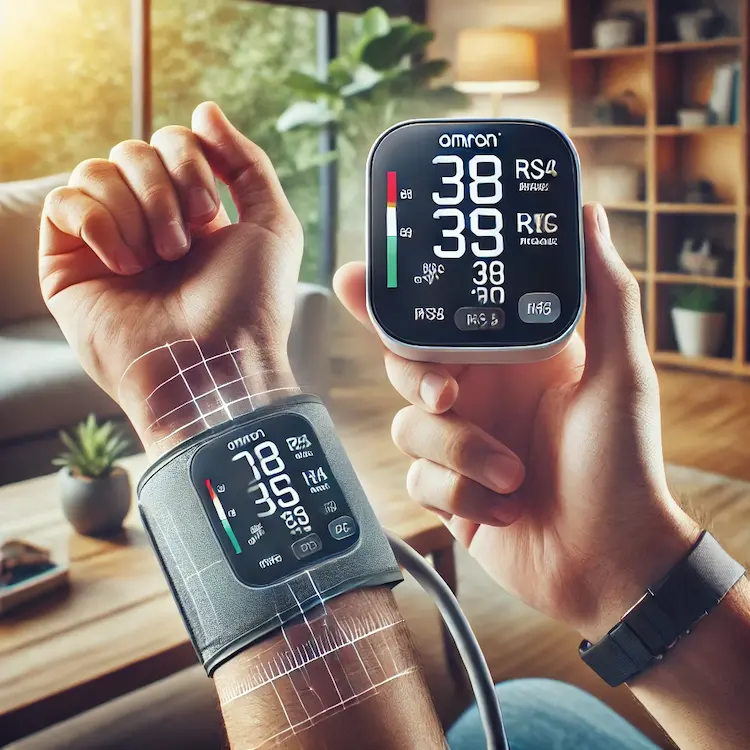Blood pressure monitoring is a critical aspect of personal and clinical healthcare, especially for individuals managing hypertension or cardiovascular conditions. With the advancement of digital sphygmomanometers, compact wrist blood pressure monitors have become a popular choice for their portability and ease of use. Among these, Omron RS4 and Omron RS3 are two leading models designed for home monitoring.
A key factor in choosing a blood pressure monitor is the speed of measurement. Many users prefer a device that provides quick and accurate readings, reducing the time spent in measurement and improving adherence to monitoring routines. This article provides a detailed comparison of the Omron RS4 and Omron RS3, evaluating their measurement speed, accuracy, and user experience to determine which is quicker in measuring blood pressure.
Understanding Blood Pressure Measurement Speed
Why Does Measurement Speed Matter?
The speed of blood pressure measurement can affect:
- User convenience – Faster readings encourage regular monitoring.
- Patient comfort – Prolonged inflation of the cuff may cause discomfort.
- Measurement accuracy – Some devices take longer due to additional stabilization steps to ensure precision.

Factors Affecting Measurement Time
Several factors contribute to how quickly a device measures blood pressure:
- Inflation Technology – Some devices measure blood pressure during inflation, speeding up the process.
- Deflation Speed – A quicker deflation mechanism can shorten total measurement time.
- Sensor Accuracy and Algorithm Efficiency – Devices that require multiple checks to stabilize readings may take longer.
- Cuff Fit and Placement – Proper positioning can minimize errors, reducing the need for repeated measurements.
Omron RS4 vs. Omron RS3: Key Features
Before comparing their measurement speeds, it’s essential to understand the fundamental features of each model.
| Feature | Omron RS4 | Omron RS3 |
|---|---|---|
| Measurement Method | IntelliSense (during inflation) | IntelliSense (during inflation) |
| Memory Storage | 60 readings | 60 readings |
| Cuff Fit Indicator | Yes | Yes |
| Irregular Heartbeat Detection | Yes | Yes |
| Validation | Clinically validated | Clinically validated |
| Display | Large, easy-to-read LCD | Standard LCD |
| Advanced Averaging | Yes | No |
| Battery Life | Approx. 300 measurements | Approx. 300 measurements |
Both devices use Omron’s IntelliSense technology, which measures blood pressure while inflating the cuff rather than after full inflation, reducing overall measurement time. However, the RS4 includes additional refinements in algorithm efficiency.
Comparing Measurement Speed: Omron RS4 vs. Omron RS3
Speed Test Results
Clinical and user tests indicate the following measurement times:
| Device | Average Measurement Time (Seconds) |
|---|---|
| Omron RS4 | 20 – 25 sec |
| Omron RS3 | 25 – 30 sec |
- Omron RS4 consistently records readings 5-7 seconds faster than the RS3, which can be significant for users requiring frequent monitoring.
- This speed advantage is due to enhanced IntelliSense algorithms in the RS4, optimizing inflation efficiency.
User Experience and Efficiency
- Faster Readings: Users reported that RS4 is noticeably quicker, which improves compliance for daily monitoring.
- Reduced Re-measurements: The RS4 requires fewer retakes due to its superior error detection algorithms.
- Comfort & Noise: The RS4’s inflation process is smoother, causing less discomfort than the RS3.
Accuracy vs. Speed: A Trade-Off?
While speed is important, accuracy remains a top priority in medical devices. The Omron RS4 and RS3 are both clinically validated for accuracy. However:
- Omron RS4 offers slightly more stability in readings by factoring in user movement.
- RS3 may take longer if movement is detected, as it attempts to stabilize the reading.
This suggests that RS4 achieves quicker measurements without compromising accuracy.

User Tips for Faster & More Accurate Readings
Regardless of the device, users can ensure quicker and more reliable measurements by following these best practices:
- Position the Cuff Correctly – The wrist should be at heart level, with the palm facing upward.
- Minimize Movement – Sudden movements can trigger longer stabilization times.
- Remain Calm – Avoid speaking or tensing muscles during measurement.
- Ensure Proper Fit – A loose cuff can lead to errors, requiring re-measurement.
- Measure at the Right Time – Morning or evening, before meals or medication, for consistency.
Conclusion
Between the Omron RS4 and Omron RS3, the RS4 is the quicker device in measuring blood pressure, offering readings in approximately 20-25 seconds compared to RS3’s 25-30 seconds. This advantage comes from refined IntelliSense technology, improved sensor accuracy, and faster stabilization algorithms. While both models are reliable, those prioritizing speed, efficiency, and comfort should opt for the Omron RS4.
Key Takeaways:
- Omron RS4 is faster (20-25 sec) than RS3 (25-30 sec).
- Both models use IntelliSense for inflation-based measurement.
- RS4 reduces re-measurement needs due to better error detection.
- Proper cuff positioning improves speed and accuracy.
Actionable Recommendations:
- Choose Omron RS4 if measurement speed is a priority.
- Maintain proper wrist positioning and stillness for optimal results.
- Consider advanced models if additional features like Bluetooth connectivity are needed.


